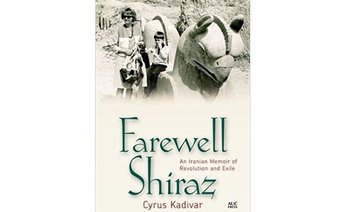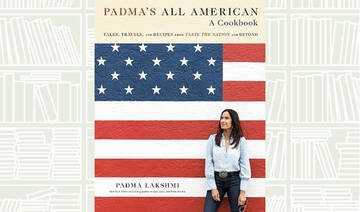Niall Ferguson, prolific historian and author of 14 books, explores in “The Square and the Tower,” his latest publication, whether it is better to be in a network that gives you influence or in a hierarchy that gives you power. The square represents the market square, or town square, whereas the tower stands for hierarchical control.
The unlimited scope of the subject enables Ferguson to jump around history in 60 chapters that follow neither a chronological order nor any other order for that matter. All the chapters are structured like short essays of unequal length, ranging from two pages to 15 pages, and can be read on their own.
Many of us believe that social networks are a new phenomenon, but the truth is that they have always existed and have played an important role even though many networks have privileged, long-standing and rigid hierarchies.
Up until the 16th century, the word “network” meant a woven mesh made of interlaced thread and it was not until the 19th century that engineers and geographers began to use the word “network” to describe waterways and railways. Then, in the late 20th century, networks were to be found everywhere — we have electrical networks, telephone and television networks and, finally, digital and social networks.
On the other hand, hierarchies contributed to render the exercise of power more efficient and more centralized. This autocratic rule which created social cohesion was perfectly explained by the Tsarist policeman Nikiforych to a young Maxim Gorky: “There’s an invisible thread, like a spider’s web, and it comes right out of his Imperial Majesty Alexander the Third’s heart. And there’s another which goes through all the ministers through his excellency the governor and down through the ranks until it reaches me and even the lowest soldier. Everything is linked and bound together by this thread…with its invisible power.”
Ferguson has taken advantage of the limitlessness of the subject. He jumps freely from one century to another and this lack of rigor is also visible in the chapters, which are written like stories ranging from a couple of pages to eight pages. These stories appeal to all tastes I singled out two stories that are brilliant. The stories on the Rothschild family and Henry Kissinger’s network of power are extensions of his bestsellers, “The House of Rothschild” and “Kissinger 1923-1968: The Idealist,” universally praised for their meticulous research.
The Rothschild family had built the largest concentration of financial capital in Europe by the middle of the 19th century. They succeeded thanks to “the innovations they introduced to the international market for government debt,” according to the book, and they understood the vital importance of a reliable communications network. Eighteenth century British merchant Thomas Raikes noted in his journal that the Rothschilds had become “the metallic sovereigns of Europe.” They were established in Paris, London, Vienna, Frankfurt and Naples and thus exerted a quasi-absolute control over the European exchange. They appeared to “hold the strings of the public purse. No sovereign without their assistance now could raise a loan.” The Rothschild family had the capacity of underwriting loans for Austria, but they were also known for their amazing communications and intelligence network. Thanks to their private couriers they were capable of providing a trustworthy news service which statesmen and diplomats also used because it was much faster than the official courier systems used for relaying diplomatic correspondence.
“Henry Kissinger’s Network of Power,” one of the finest essays in the book, reminds us of the book Ferguson wrote about Kissinger. While in office, Kissinger appeared 15 times on the cover of Time magazine. He was described as “the world’s indispensable man… the right man in the right place at the right time.” Networks played a key role in his “chain reaction” diplomacy.
“Kissinger had understood that networks were more powerful than the hierarchies of the federal government,” writes Ferguson. “Kissinger’s power, still based on a network that crossed not only borders but also professional boundaries, endured long after he left government in 1977… No future national security adviser or secretary of state, no matter how talented, would ever be able to match what Kissinger had achieved.”
Kissinger believed that the strengthening of networks and the weakening of hierarchy reduced the risk of a third world war.
As we reach the end of the book, we are left with many questions. What kind of future lies ahead of us? Are we about to experience a successive wave of revolutions like those that happened from the 16th century to the 18th century? Will the established hierarchies unite their efforts to fight Internet anarchy and strike a deal with the networks for a better future? Only time will tell, but in the meantime, this book is a fascinating and insightful read.
Book Review: The far-reaching power of networks
Book Review: The far-reaching power of networks

Book Review: ‘Keep the Memories, Lose the Stuff’

If you are someone who adopts a new year, new me mindset every Dec. 31, then Matt Paxton’s 2022 book “Keep the Memories, Lose the Stuff: Declutter, Downsize, and Move Forward with Your Life,” written with Jordan Michael Smith, is worth picking up.
In the process of reading it, I found myself filling four bags with items to donate.
Paxton’s approach is notably different from Marie Kondo’s once-ubiquitous Japanese tidying method, which asks readers to pile all their possessions into one part of the room, hold each item up and ask whether it sparks joy.
While Kondo’s philosophy sounds appealing on paper — thanking objects and dedicating an entire weekend to the process — it is not realistic for everyday life. Paxton’s method feels more practical and gentler.
Paxton knows the emotional terrain of clutter well. For more than 20 years he has helped people declutter and downsize. He was a featured cleaner on the reality show “Hoarders” and later hosted the Emmy-nominated “Legacy List with Matt Paxton” on PBS.
Through this work, Paxton gained insight into why people hold on to things and what makes letting go difficult even of what seemingly looks useless.
What works especially well is how personal the book feels from the outset.
He opens by explaining his anxiety-inducing decision to move to a different US state with his three children, and all of their stuff, to live with his new wife and all of her stuff.
Together, they would be raising seven children — very Brady Bunch style — but with slightly more practical life considerations.
He also talks about how he got into this line of work. When he was in his 20s, his father died and he had to help clear out his belongings. He found that process to be cathartic and special. And he was good at it.
Soon after, short on cash, he accepted a job from someone in his small, close-knit community to help organize her home — likely hired out of pity more than anything else.
That slow process of sifting through items and learning the stories behind each one — directly from the owner of those objects — sparked plenty of joy. He was hooked.
Throughout the book, Paxton makes the case for consistency. His advice is manageable. He encourages readers to dedicate just 10 minutes a day to decluttering to form a habit. We all can spare that.
Paxton also stresses the importance of communication.
Talk to your loved ones about what you want done with your belongings when you are no longer around, and just as importantly, listen to what they want done with theirs, he urges. He offers practical guidance on having these conversations with parents, partners and children.
One critique of this book is that Paxton dedicates a large portion to physical photographs. While this is relevant for many older readers, it may feel less urgent going forward, particularly for Gen Z and younger, whose clutter is more likely to be solely digital.
Ultimately, “Keep the Memories, Lose the Stuff” is less about getting rid of things than about making space; by speaking about objects, sharing their stories and allowing them — and each of us — to move on.














